Crisis, Conflicts, and Transformations
New and recent books from Pitzer alumni and faculty offer timely considerations of secularism, racism, climate change, dystopian worlds, and more
August 16, 2024
Countdown: A Life in 20 Songs

When cultural historians want to analyze a decade or other time period, one of the best ways is to look at that era’s songs. Tom Waldman ’78 applies a similar method to his life in the memoir Countdown: A Life in 20 Songs. From the Beatles to Beethoven, Waldman ranges far and wide as he devotes each chapter to a specific song and its connections to him and the world around him. The iconic “War,” for instance, offers a chance to reflect on the impact of Vietnam on his life (and society in general) though he was too young to be drafted for that war. A Claremont Courier piece about Waldman’s book explains that he isn’t practicing nostalgia here but instead gives readers a highly personalized approach to history and some of the significant events that have influenced his life. (Bookbaby)
Beyond Doubt: The Secularization of Society
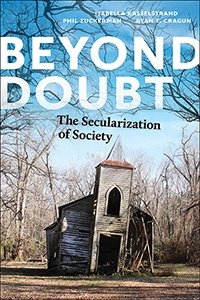
Is our society really becoming more secular? In Beyond Doubt, Professor of Sociology and Secular Studies Phil Zuckerman and his co-authors Isabella Kasselstrand and Ryan T. Cragun suggest that the theory underscoring secularization—which many opponents have claimed is flawed, incomplete or outright wrong—is indeed correct. They also demonstrate that the impact of organized religion is declining as a result of modernization. Rather than present a simple defense of the theory, Zuckerman and his co-authors seek to produce a formalization that includes clear definitions of relevant terms as well as propositions that can be tested. This openness to testing and the authors’ general approach to the subject has resulted in a book that will serve as a resource for anyone interested in studying religion, secularism, and the dynamic between them. (New York University Press). Read more about the ideas in this book.
Language and Gender in Children's Animated Films

According to Pitzer Professor of Linguistics Carmen Fought, Disney is renowned for presenting itself as a purveyor of sweet and innocent family fare but the “messaging” of the studio’s films can sometimes be downright dangerous. That’s the big reveal in Fought’s new book co-authored with Karen Eisenhauer ’13. Disney and Pixar might be beloved by audiences of children and adults, but the authors challenge the kind of messaging that is found in the characters and stories created by these media giants. They apply in-depth qualitative analysis to examine the portrayal of male characters, female characters, and queerness in their films, and demonstrate how different linguistic tools and techniques can be used to better understand popular children’s media. (Cambridge University Press)
Master of Health: Racial Science and Slavery in U.S. Medical Schools

Hailed by Harvard historian Vincent Brown as “a meticulous autopsy of a ghoulish intellectual scandal,” Professor Chris Willoughby’s book examines the deeply problematic area of how racial theories distorted medical education in 19th-century America. A visiting assistant professor of medicine and health at Pitzer, Willoughby shows the medical establishment’s significant hypocrisy when it came to experimentation. Despite a belief in the biological differences between races, medical practitioners didn’t hesitate to dissect the cadavers of Black people to help them understand bodily functions. In the process he reveals how ideas about anatomical differences became accepted in medical schools not by some extremist or fringe group, but by some of the leading mainstream figures of the day. (University of North Carolina Press)
Postcolonial Fiction and Colonial Time: Waiting for Now

The theme of “waiting” in Joseph Conrad’s Heart of Darkness provides an entry-point that allows Amanda Lagji, assistant professor of English and world literature at Pitzer, to explore the work of more contemporary African writers including Nadine Gordimer, J.M. Coetzee, Zakes Mda, and others. Lagji argues in Postcolonial Fiction and Colonial Time: Waiting for Now that waiting is a fundamental element in understanding time and power in postcolonial fiction. Critics have praised Lagji for her innovative perspective, including the University of Adelaide’s Andrew van der Vlies, who writes that Lagji “presses reset on our tendency to read waiting as stasis, instead recasting apparent impasse as productively disruptive to hegemonic temporalities. A timely and important work.” (Edinburgh University Press)
Organizing Lessons: Immigrant Attacks and Resistance!

José Z. Calderón, professor emeritus of sociology and Chicano/a Latino/a studies at Pitzer, and Victor Narro, UCLA Labor Center project director, have released a collection of essays from labor activists and activist scholars working for immigrant and workers’ rights. The book’s essays articulate how immigration policy relates to larger questions of nation-building, racialization, political participation, and more. Calderón notes how the essays gathered here “draw out lessons on the importance of building multiracial and intersectional solidarity in our immigrant rights, labor, and community-based movements.” (Community Innovators Lab)
Protecting the Bears of Vietnam
Pitzer alum research has resulted in an herbal recipe book with a special purpose

Freshly dried sand ginger slices. A crystalline bottle of rice liquor. Put them together for 10 days, and you have an aromatic ginger essential oil that can melt the sore stiffness in your arthritic joints. This massage alcohol—a potent example of herbs’ healing properties—has the potential to rescue the Asiatic black bears of Vietnam.
In collaboration with Pitzer and Claremont Colleges alumni, Animals Asia, the Traditional Medical Association of Vietnam, and The Rick and Susan Sontag Center for Collaborative Creativity (the Hive) published a book of local women’s herbal remedies such as the aromatic ginger massage oil. This book presents an alternative to the practice of bear bile farming that is harming Vietnam’s bear population. In October 2022, the group hosted a launch party to celebrate printing 1,000 copies of Herbal Recipes for Health Improvement with alternative treatments to animal medicine.
The Phung Thuong region is one of the last hotspots of bear farmers in Vietnam. Bear farmers extract bile from Asiatic black bears’ gallbladders to treat inflammatory, liver, and degenerative ailments. The nonprofit Animals Asia partnered with the Hive—a hub for creative innovation at The Claremont Colleges—to use human-centered design to empathize and collaborate with Phung Thuong residents to explore herbal alternatives in ways that resonated with the community.
“Using human-centered design with Animals Asia turned out to be one of the most transformative experiences of my life,” said Pitzer alum Lena Tran ’18, who was on the Hive’s 2018 cohort for this project.
“From co-designing with community members to prototyping ideas for collective care, I learned how to advocate for community voices, facilitate creative problem solving, and ultimately leverage design for social change,” said Tran.
Students such as Tran worked on various prototypes until they landed on an herbal remedies book highlighting recipes from older village women. The Hive’s three research teams in Vietnam included four Pitzer alumni—Tran, Kimberly Ha ’18, Mai Nguyen ’19, and Olivia Hewitt ’22—as well as other Claremont Colleges alumni.
Natural Consequences: Intimate Essays for a Planet in Peril

Char Miller ’75, W.M. Keck Professor of Environmental Analysis and History at Pomona College, presents vignettes and historical interpretations that clearly map out environmental challenges and threats due to climate change. Miller’s collection features 75 environmental essays that explore the threats of fire, drought, development, and fracking. For acclaimed naturalist writer John N. Maclean, Miller “brings to the task a scholar’s wealth of knowledge about how bad things really are, but he also sounds a note of solace: we can find healthy ways to connect to the planet’s creatures, plants and phenomena like wildland fire, but it comes through coexistence, not domination.” (Chin Music Press)
Because I Loved You
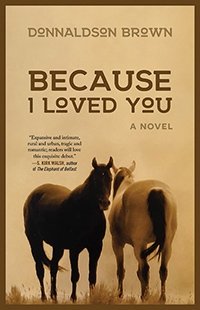
In her debut novel, Donnaldson Brown ’82 presents a moving portrait of star-crossed lovers in East Texas, brought together by their love of horses and torn apart by tragedy and closely-guarded secrets. After a span of years have passed, lovers Leni and Caleb meet again, and their old passion reignites. But can their love for one another overcome choices made in the past? Award-winning novelist Mary Morris credits Brown’s book with possessing “an enduring power … that traverses decades and takes many forms” even as the characters’ lives take them in different directions. (She Writes Press)
Now Do You Know Where You Are
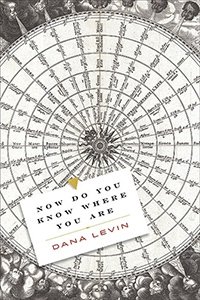
Dana Levin’s ’87 recent fifth collection of poetry walks readers through what critics describe as “the disorientations of personal and collective transformation.” Written during the tumultuous years of 2016 and 2020, Now Do You Know Where You Are not only addresses the familiar and timely topics of climate change, Covid-19, the 45th U.S. president, and other issues gleaned from the day’s headlines, it also investigates how great change calls the soul out “to be a messenger—to record whatever wanted to stream through.” Named to the New York Times list of 100 Notable Books of 2022 and one of NPR’s “Best Books of 2022,” Publisher’s Weekly writes that “Levin’s luminous latest reckons with the disorientation of contemporary America.” (Copper Canyon Press)
See more from Levin.
Forager: Field Notes for Surviving a Family Cult
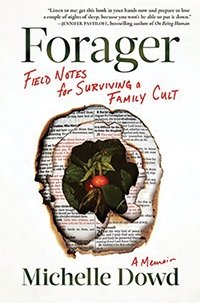
In Forager: Field Notes for Surviving a Family Cult, Michelle Dowd ’90 describes her childhood growing up in a cult called the Field and later on a 16-acre plot she calls the Mountain in the Angeles National Forest. (Algonquin Press)
Read Participant’s interview with the author here.
Why Don't They Cry?: Understanding Your Living Child's Grief

Zander Sprague ’91 suffered an irreparable loss after his sister Lucy was murdered, and he didn’t want to further burden his parents with his pain as they dealt with their own grief. In Why Don’t They Cry? Sprague uses his own personal experiences and passion toward sibling survivors to provide insights for parents who wish to seek reconnection with their surviving children. He sheds light on the sufferings of many sibling survivors, whose grief is often eclipsed by the grief of their parents. (Paradiso Press)
Seaweed Rising

Move over, H.G. Wells: In Rob Magnuson Smith’s ’91 new novel Seaweed Rising, the human race faces another alien threat long hidden on earth and waiting for the right time to strike. Unlike Wells’ Martians, these sentient beings hide beneath the sea, and only an amateur seaweed collector seems to recognize the signs of their ominous presence. A senior lecturer in creative writing at the University of Exeter, Smith’s previous novels include the lyrical The Gravedigger and the darkly comic Scorper. His publisher describes Seaweed Rising as a genre-bending existential addition to Smith’s body of work, taking readers “from a Cornish fishing village to the Spanish coast up to the blinding glacial landscape of the Arctic” in a tale in which “human society falls under the microscope.” (Sandstone Press)
Speak Now This Charm

In her fourth poetry collection, Deborah Bogen ’72 creates what her publisher calls “a mosaic from states of mind we all experience, but are trained to ignore, or forget, or devalue. She records what is visible and what is positioned beyond consciousness.” Speak Now This Charm presents an exploration of grief, trauma, and vulnerability with a series of concise and moving poems that share a common length of one to three paragraphs, none longer than a page. Each poem stacks on the others in a pattern suggestive of building blocks, resulting in a vast tapestry of meditations on the many ways that mortality impacts us all. (Jacar Press)
We Are a Haunting
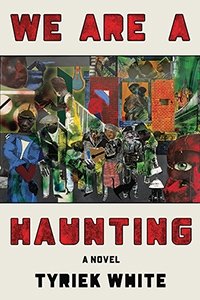
Described by NPR as “an absolute triumph,” Tyriek White’s ’13 debut novel We Are a Haunting introduces us to Colly, a high school student who can communicate with the dead— especially his mother Key, whose sudden death leaves him drifting in a perpetual state of confusion and grief. The media director of Lampblack Lit, a literary foundation which seeks to provide mutual aid and various resources to Black writers, White tells a story that switches between Colly and Key’s viewpoints as the son struggles with the loss and his mother’s spirit struggles to give him answers he desperately needs. (Astra House)
The Elissas: Three Girls, One Fate and the Deadly Secrets of Suburbia

The “Troubled Teen Industry” is the target of this poignant book that combines sociology and memoir by Bustle editor-at-large Samantha Leach ’15. That industry preys on young people eager to emulate celebrities like Paris Hilton and Kim Kardashian in order to win popularity with their peers despite the dangers and suffering involved. One example is Leach’s childhood friend Elissa, a wealthy suburban teen who cultivated a rebellious, promiscuous self-image and eventually spent time in several therapeutic boarding schools before her death at 18. Leach captures the societal pressures facing upper-middle-class women in America and the institutions supposedly trying to save them. (Legacy Lit)
Building Culturally Responsive Partnerships Among Schools, Families, and Communities

Schools alone can’t help our children navigate an increasingly complicated world; networks and collaborations among many groups provide a better model for what students will need in the years ahead. That’s an argument showcased in this new book co-edited by Susan Warren ’78. Warren has accumulated 40 years of teaching and administrative experience in higher education and in pre-K12 organizations and is a senior research and evaluation associate with the Claremont Evaluation Center. The book serves as a primer on how to create culturally responsive, socially just school-family partnerships that improve student learning outcomes.
The Last Animal: A Novel

Famed British chemist Rosalind Franklin isn’t the only female scientist ever to get a raw deal and have her contributions overlooked. In Ramona Ausubel’s ’01 latest novel, we meet Jane, a single mom, widow, and scientist who is irritated at being “twice as capable and half as appreciated” as the other members of UC Berkeley’s paleontology lab. The novel opens during a summer expedition in Siberia, where Jane and her group are searching for woolly mammoth bones and hoping to extract DNA that might be used to one day bring the creature back from extinction. The Christian Science Monitor calls Ausubel’s new novel “a wild and woolly global escapade about unbounded scientific experimentation. Yet what comes into sharpest focus under her authorial microscope are mother-daughter and sister relationships.” (Riverhead Books)
Bea Wolf

In his latest tale for readers grades five and older, Zach Weinersmith ’03 pays obvious homage to the Beowulf saga with this graphic novel about an epic struggle between a band of child warriors and a menacing adult who lays siege to their treehouse fortress. “Listen to the lives of the long-ago kids, the world-fighters, the parent-unminding kids, the improper, the politeness-proof,” Weinersmith writes, applying a mock-heroic style to this story set somewhere in American suburbia. This group of wild childs celebrates its youth in the fortress of Treeheart, and their revelry soon irritates the joyless Mr. Grindle, whose withering touch can instantly turn children into grown-ups. With illustrations by French artist Boulet, Weinersmith has created what Publishers Weekly calls “a joyously lyric, rapid-fire epic that honors the original’s intricate linguistic constructions.” (First Second/Roaring Books)